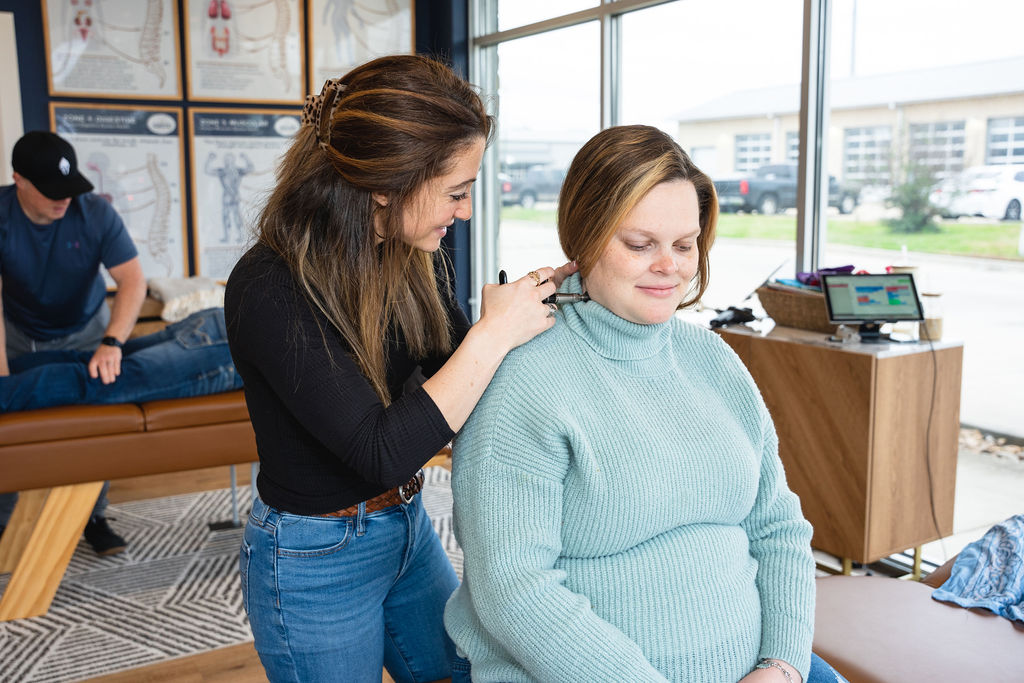Pregnancy and Posture: 6 Natural Ways to Stay Comfortable From Bump to Birth

Why Posture Shifts During Pregnancy—and Why It Matters
Pregnancy is a season of breathtaking change, and one of the first things many mothers notice is how their posture transforms, almost overnight. As your baby bump grows, your body works overtime to support new life—and these physical shifts aren’t just cosmetic. Pregnancy posture and body alignment directly impact your comfort, your baby’s space, and your overall pregnancy wellness. Let’s explore why these changes happen, and why they matter for both you and your growing family.
The Anatomy of a Growing Bump
Your center of gravity shifts forward as your uterus expands—imagine carrying a backpack on your belly instead of your back. Because your body must balance this weight, your pelvis tilts forward (anterior pelvic tilt), and your lower back curve deepens (lumbar lordosis). According to the American Pregnancy Association, up to 70% of pregnant women experience increased lower back curvature by the third trimester. This change helps you stay upright, but it also places extra stress on your spinal joints and supporting muscles. One Cypress mom shared that she felt like her “whole posture rewired itself” by month six, making it hard to find a comfortable sleeping position. When your body adapts, it’s not just about standing tall—every shift can influence core strength, hip mobility, and even how efficiently you breathe. If your spine is out of alignment, you may notice more fatigue, tension, or even digestive changes. These aren’t just “pregnancy complaints”—they’re your body’s way of signaling a need for support.
How Hormones Impact Ligaments and Alignment
During pregnancy, your body produces a hormone called relaxin. Relaxin softens ligaments (the tough bands that hold your joints together), allowing your pelvis and hips to widen for birth. This is a natural and essential adaptation, but it comes with a tradeoff: increased joint laxity, or looseness, especially in your lower back, pelvis, and knees. Relaxin levels start rising in the first trimester and peak around week 12, but their effects linger. This hormone-driven flexibility helps baby’s journey into the world, but it can also make you more vulnerable to misalignments, sprains, or even sudden aches when you move quickly. One study published in the Journal of Orthopaedic & Sports Physical Therapy found that 50% of pregnant women develop pelvic girdle pain, often linked to these hormonal changes. When joint stability drops, posture can feel unpredictable—some days, you stand with ease; others, every step is a challenge. Regular check-ins with your prenatal chiropractor can help your body “reset the fuse box,” ensuring your spine and pelvis stay balanced even as your ligaments soften. For more on how misalignments (called subluxations) impact family wellness, see our guide to subluxations and natural treatment for Cypress-area families.

Connection to Baby’s Space and Mom’s Nervous System
Alignment is about more than comfort—it’s about creating the optimal environment for your baby’s growth and your body’s adaptability. When your pelvis and spine are aligned, your baby has more room to move, rotate, and settle into the best position for birth. Misalignment can subtly compress the uterus, which may restrict movement or make labor more challenging. Additionally, the nervous system—the communication highway between your brain and body—relies on clear signals to regulate breathing, digestion, sleep, and even mood. If nerves are pinched or irritated due to poor pregnancy body alignment, you might notice shallow breathing, heartburn, or restless nights. Research published in BMC Pregnancy and Childbirth highlights that women who maintain healthy posture and spinal alignment during pregnancy report fewer interventions during labor and greater satisfaction with their birth experience. By supporting nervous system function through gentle adjustments like the Zone Technique, families can “turn up the dimmer switch” on healing, resilience, and calm. To learn why chiropractic isn’t just for adults, explore why pediatric chiropractic is essential for your child’s growth and development.
These posture shifts are your body’s way of adapting to life’s most beautiful challenge. When you understand and support these changes, you lay the groundwork for a healthier pregnancy—and a thriving family. Whether you’re in Cypress, Bridgeland, Katy, or Tomball, Ignite Chiropractic stands ready to help you spark transformation from the inside out.
Common Posture Mistakes Pregnant Moms Make (and How to Fix Them)
Pregnancy’s physical changes can pull your posture out of alignment in ways you might not even notice—until discomfort sets in. The good news: most posture pitfalls during pregnancy are easy to spot and, with gentle cues, simple to correct. Learning to move and rest with intention helps you stay comfortable, keeps your body balanced for birth, and supports your baby’s space. Let’s break down the most common mistakes, how to identify them, and—most importantly—how you can reset your posture for a more comfortable pregnancy.
Swayback and Forward Head Posture — Spot the Signs in Mirrors and Photos, Plus Quick Corrections
One of the most frequent posture mistakes pregnant moms make is “swayback” (technically, lumbar lordosis), where your lower back arches excessively and your belly pushes forward. This happens because your center of gravity shifts as your bump grows. Research published in the journal Spine found that women in the third trimester often experience a 60% increase in lumbar curve, which can lead to back pain and fatigue. You might notice swayback in a mirror: your hips tilt forward, and your shoulders drift behind your hips. Forward head posture often joins the party—your chin juts out and your ears no longer line up with your shoulders.
Quick fix: Stand sideways in front of a mirror and notice your profile. Is your head in front of your shoulders? Are your hips pushing forward? To realign, imagine a string gently pulling the crown of your head upward while you tuck your chin slightly. Think of “stacking” your ears over your shoulders and your shoulders over your hips. This simple visualization helps reset your alignment instantly. Practice this when waiting in line, brushing your teeth, or even holding your phone for a reminder that small posture shifts make a big difference for a comfortable pregnancy.
Sitting Habits That Sabotage the Spine — Couch Slouching, Crossing Legs, and Belly-Lean Work Desks
It’s tempting to sink into the couch after a long day, especially when pregnancy fatigue kicks in. But prolonged slouching or crossing your legs can put uneven pressure on your pelvis and spine, leading to hip pain or numbness. According to the American Pregnancy Association, poor sitting posture is a top culprit for sciatic nerve discomfort in the second and third trimesters. Another sneaky saboteur? Leaning toward your desk to accommodate your growing belly, which strains your neck and shoulders.
Instead, choose a chair with good lumbar support and sit with both feet flat on the floor. If you notice yourself crossing your legs, reset by uncrossing and gently rolling your shoulders back. When working at a desk, scoot your chair in so your belly stays close but supported, and use a small pillow behind your lower back if needed. One Cypress mom shared that swapping her soft couch for a firmer, upright chair helped her sleep better and reduced her evening aches—a small change, big payoff. For more family-centered tips, check out Safe & Gentle Newborn Chiropractic Adjustments: Cypress Parents’ Guide to Infant Care for newborn comfort strategies that benefit the whole household.
Simple Daily Cues: ‘Zip Up Your Core,’ ‘Stack Ears Over Shoulders,’ and Breathing Checks
You don’t need a complicated routine to improve posture during pregnancy; instead, focus on small, actionable cues throughout your day. “Zip up your core”—gently draw your belly button toward your spine (think about zipping up a snug jacket), which activates your deepest abdominal muscles for support without straining. “Stack ears over shoulders” is a cue you can practice whenever you catch your reflection—whether you’re waiting at a stoplight or preparing dinner. Finally, add breathing checks: place one hand on your chest and one on your belly. As you inhale, your belly should expand more than your chest, signaling diaphragmatic breathing, which supports your core and eases tension.
By using these safe posture tips for pregnant women, you not only feel better in the moment but also set the stage for smoother labor and postpartum recovery. Posture is about so much more than appearance—it’s about creating space for your baby, supporting your nervous system, and empowering your body’s natural adaptability. Ignite Chiropractic uses the Zone Technique to help pregnant women in Cypress, Bridgeland, Katy, and Tomball “reset the fuse box” and restore balance across digestion, hormones, and energy. To learn how your body’s six zones impact pregnancy comfort and family wellness, discover The 6 Zones of the Body: Decode Your Symptoms & Restore Family Wellness in Cypress, TX.
Remember, every small adjustment you make helps your body adapt, keeps your pregnancy comfortable, and sparks positive shifts that your whole family can feel.
Natural Posture Exercises & Stretches for Each Trimester
Pregnancy transforms your body—shifting your center of gravity, relaxing ligaments, and inviting new aches into your every day. But you aren’t powerless. The right pregnancy posture exercises, tailored to each trimester, can spark relief, support your changing body, and help you stay comfortable all the way to labor day. Research shows that women who engage in trimester-appropriate movement experience less back and pelvic pain, better sleep, and even shorter labors. When you intentionally move, stretch, and breathe, you’re not just easing discomfort—you’re helping your nervous system adapt, which sets the stage for a smoother birth and recovery. Let’s break down what your body needs—and how to nurture it—through every chapter of pregnancy.
First-Trimester Foundations — Core Engagement, Pelvic Rocks, and Breathing Drills
In the first trimester, subtle changes are already underway. Even if your bump is still a secret, hormonal shifts begin softening the ligaments that support your pelvis and spine (a process called “relaxin release”). This makes core stability a must. Engaging your deep abdominal muscles—think gentle “hugging the baby”—protects your lower back as your posture begins to shift. A simple pelvic rock (rocking your hips forward and back while on hands and knees) can relieve early tension and prime your body for balance. Breathing drills, such as deep belly breaths, teach your nervous system to downshift from “fight or flight” into rest-and-digest mode, which research links to lower stress and healthier fetal development. Imagine your breath as a light switch: a full inhale and slow exhale can brighten your energy, even on tired days. Practicing these basics early helps prevent compensations that often lead to pain later.
Second-Trimester Stabilizers — Hip Flexor Stretches, Gentle Resistance Band Rows, Wall Angels
As your bump grows in the second trimester, your posture changes more dramatically—a natural sway in your lower back and a forward roll of your shoulders become common. This is when relieving back pain naturally in pregnancy becomes essential. Hip flexor stretches (like a gentle kneeling lunge) target the muscles that tighten as your pelvis tilts. Studies show that regular hip flexor stretches reduce sciatica risk in pregnant women by over 40%. Gentle resistance band rows strengthen your upper back, counteracting the “mom slouch” and supporting your chest as it expands. Wall angels—standing with your back and arms against a wall and slowly sliding your arms overhead—improve shoulder mobility and open the chest, making breathing easier as baby grows. Each of these moves sparks a positive shift in your posture, helping your body adapt without pain. Consider this your second-trimester toolkit for staying strong, mobile, and comfortable.

Third-Trimester Mobility + Breath — Cat-Cow, Supported Squats, and Diaphragmatic Breathing for Labor Prep
Now, in the third trimester, mobility and breath are your best friends. As baby drops lower, your back and hips can feel more strained. The cat-cow stretch (moving your spine between an arched “cat” position and a dipped “cow” position on hands and knees) is a classic for a reason: it keeps your spine supple and relieves pressure instantly. Supported squats—using a chair or wall for balance—build hip strength and flexibility, which research connects to shorter, less complicated labors. Diaphragmatic breathing (breathing deeply into your belly, letting your diaphragm expand and contract) preps your body for the demands of labor and helps regulate your nervous system, making contractions feel more manageable. One Cypress mom shared that practicing these natural ways to stay comfortable in pregnancy helped her move with confidence and trust her body’s cues, even as her due date neared.
Remember, every exercise is another way to support your body’s innate ability to adapt. If you’re seeking even deeper root-cause care—especially for persistent discomfort, breech positioning, or concerns about baby’s development—explore how the Zone Technique and nervous system-focused chiropractic can make a difference. Dive deeper into how chiropractic supports optimal fetal positioning at Chiropractic for Breech Babies: A Gentle, Science-Backed Path to Optimal Fetal Position, or learn why early nervous system care matters for your growing family at Why Pediatric Chiropractic is Essential for Your Child’s Growth and Development.
By moving with intention and tuning into your body’s signals, you’re not just relieving aches—you’re igniting a foundation of health for both you and your baby, right here in Cypress, Bridgeland, Katy, or Tomball.
Everyday Ergonomics: Setting Up Your Home and Work Spaces for Comfort
Pregnancy changes everything—including the way you sit, sleep, and move at home or work. The right setup can transform daily strain into comfort, making a comfortable pregnancy far more achievable. Research from the American Chiropractic Association shows that 50% of pregnant people develop back pain, often due to posture challenges in daily routines. But when you understand how to improve posture during pregnancy through simple ergonomic adjustments, you help your body feel supported, not just survive. Let’s break down real-life strategies that spark comfort—whether you’re at your desk, behind the wheel, or folding laundry with a toddler in tow.
Desk and Driving Adjustments
Your desk chair and car seat might be silent culprits behind pregnancy discomfort. Position your seat so your hips are slightly higher than your knees; this supports your pelvis and eases pressure on your lower back. Adding a small lumbar roll (a firm pillow at your lower back) can help you maintain the natural curve of your spine, reducing fatigue during long hours. According to the National Institute for Occupational Safety and Health, adjusting your seat height by just two inches can relieve up to 40% of lower back strain.
Keep your steering wheel close—about 10 inches from your breastbone—and your arms relaxed at your sides. This way, you avoid overreaching, which can stress your shoulders and upper back. If your feet dangle or strain, use a footrest or sturdy box so both feet rest flat and your weight is balanced. Cypress moms often tell us that these simple tweaks turn frustrating commutes into pain-free transitions, especially as their center of gravity shifts. Pregnant parents in Bridgeland and Katy have also found that regular breaks (every 30 minutes) to stand and stretch make a big difference in daily energy.
Sleep Positions and Pillow Support
Nighttime comfort is essential for pregnancy wellness. Side-lying—especially on your left side—optimizes blood flow to your baby and organs, as recommended by the American Pregnancy Association. Place a supportive pillow between your knees and ankles; this keeps your hips neutral and reduces strain on your lower back and pelvis. If you wake up with numb arms or sore hips, try a full-body pregnancy pillow, which cradles your bump and prevents you from rolling onto your back.
Mattress firmness matters too: one that’s too soft can leave your spine sagging, while one that’s too firm may create pressure points. Many Cypress-area families have found that medium-firm mattresses, combined with targeted pillow support, spark deeper sleep and fewer nighttime wakeups. This example shows that investing in your sleep setup is not just about comfort—it directly supports your energy and mood as you prepare for birth.
Household Hacks: Laundry, Lifting Toddlers, and Kitchen Counter Stance
Household chores don’t pause for pregnancy, but your approach can shift for comfort. When lifting toddlers or laundry baskets, squat down by bending your knees, keeping your back straight and your core gently engaged (imagine bracing as if someone might tap your belly). The Mayo Clinic recommends holding objects close to your body—this reduces strain and helps distribute weight more evenly. For kitchen tasks, stand with one foot slightly ahead of the other and switch feet every few minutes; this takes pressure off your lower back and prevents fatigue during meal prep.
If you notice that certain activities spark discomfort, your body may be signaling nervous system overload—what we call “blown fuses” in the six zones we assess at Ignite. For more on these zones and how addressing root causes can restore whole-family wellness, see The 6 Zones of the Body: Decode Your Symptoms & Restore Family Wellness in Cypress, TX. And if you’re also caring for a newborn or toddler, gentle chiropractic adjustments can help support healthy posture and comfort for your entire family—discover more in Safe & Gentle Newborn Chiropractic Adjustments: Cypress Parents’ Guide to Infant Care.
Setting up your environment for pregnancy comfort isn’t about perfection—it’s about small, intentional shifts that help you thrive. Every ergonomic choice you make is a signal to your body that you’re listening, adapting, and committed to a comfortable pregnancy. If you’re looking for a prenatal chiropractor or family chiropractor near Cypress, Katy, Tomball, or Bridgeland, remember: the right support can spark comfort for your whole household, from bump to birth and beyond.
The Role of Chiropractic Care & the Zone Technique in Pregnancy Alignment
Pregnancy transforms your entire body, and proper pregnancy body alignment is essential—not just for comfort, but for your nervous system’s ability to help you and your baby thrive. As a prenatal chiropractor serving Cypress, TX, Ignite Chiropractic empowers expectant moms to move from “just getting by” to feeling genuinely supported, inside and out. When your body’s alignment shifts, so does your baby’s environment. That’s why our approach combines gentle prenatal chiropractic adjustments with the Zone Technique—a method that helps your nervous system reorganize and adapt, nurturing both physical and emotional balance from bump to birth.
Nervous System Regulation for Mom and Baby
Think of your nervous system as your body’s fuse box—when a circuit trips, lights in the whole house flicker or go out. During pregnancy, that “fuse box” works overtime, managing hormonal changes, posture shifts, and new sources of stress. Misalignments in the spine (called subluxations) can create nervous system interference, which may show up as back pain, digestive trouble, poor sleep, or increased anxiety. Research from the Journal of Manipulative and Physiological Therapeutics found that chiropractic care significantly improves pregnancy comfort and function, reducing the severity of low back pain for 75% of expectant mothers in one study.
But the benefits don’t stop at pain relief. Proper nervous system regulation supports hormone balance, boosts energy, and even influences your baby’s development. When your body communicates clearly—just like a well-wired home—your baby receives more consistent signals for growth and adaptation. Families in Cypress, Bridgeland, and Katy often share how their prenatal chiropractor experience led to calmer moods, better digestion, and smoother sleep cycles for both mom and baby.
For a deeper dive into how subluxations can impact your family’s health, read our in-depth guide to subluxations and natural treatment for Cypress-area families.
What to Expect During a Prenatal Adjustment
Your first prenatal chiropractic visit should feel welcoming, gentle, and tailored to your unique journey. At Ignite Chiropractic, we use specialized tables and positioning pillows to keep you safe and comfortable. Every adjustment uses light, precise touch—no twisting, no cracking—focused on restoring balance rather than force. Moms often tell us, “I was surprised by how relaxing and gentle it felt.” That’s because our care supports, rather than overwhelms, your changing body.
Safety is always the top priority. The American Pregnancy Association recognizes prenatal chiropractic as safe for most pregnancies, and our team stays up-to-date with evidence-based techniques. In fact, the International Chiropractic Pediatric Association reports that regular adjustments can contribute to optimal fetal positioning, reducing the likelihood of breech presentation. If you’re concerned about breech or want to encourage ideal alignment for birth, our article on chiropractic support for breech babies shares gentle, science-backed strategies.
Cypress, TX families value community care that recognizes their needs. We see you and your family as partners in the process; every visit is a chance to ask questions, set new goals, and celebrate small wins like better sleep or less swelling. Expect your prenatal chiropractor to check your spinal alignment, assess your nervous system’s “zones,” and explain each adjustment in clear, parent-friendly language.
Research Highlights: Reduced Labor Times, Optimal Fetal Positioning, and Improved Energy Levels
The evidence for chiropractic care in pregnancy is both hopeful and practical. A landmark study published in the Journal of Manipulative and Physiological Therapeutics found that women who received regular chiropractic adjustments during pregnancy reported 24% shorter labor times for first-time moms and up to 39% shorter labors for experienced mothers. That’s a dramatic improvement with a natural approach.
Optimal pregnancy body alignment doesn’t just make moms feel better—it creates an environment where babies can settle into the best possible position for birth. The Webster Technique, a specific prenatal chiropractic protocol, is associated with a higher rate of head-down (vertex) fetal positioning and fewer interventions during delivery. One study from the Journal of Midwifery & Women’s Health found that 82% of breech cases adjusted with the Webster Technique resulted in babies turning to the ideal birth position.
Families also notice improved energy and emotional resilience. When your nervous system is less stressed, you have more bandwidth for the joys and challenges of pregnancy and parenting. As a family chiropractor Cypress TX parents trust, Ignite Chiropractic is passionate about helping you experience these benefits—not only for you, but for your growing family.
If you’re ready to move beyond survival mode and experience the spark of true wellness, reach out to a prenatal chiropractor who understands the unique needs of Cypress, Bridgeland, Katy, and Tomball families. With the right support, your body—and your baby—can thrive.
Listen to Your Body: Signs You Need Extra Support and Next Steps
Pregnancy is a season of profound transformation, and your body does its best to signal when it needs extra care. Some aches are expected, but certain symptoms call for immediate attention and a proactive approach to pregnancy wellness. When you notice pain, numbness, or persistent discomfort—especially if it interferes with daily life—your body is asking for support. Listening to these signals is an act of self-respect, not weakness. By taking them seriously, you’re protecting both your well-being and your baby’s thriving environment. Let’s explore how to discern when to seek help, who should be on your wellness team, and what actionable steps lead to a more comfortable, empowered pregnancy.
When Pain Signals Interference — Red Flags Like Sciatica, Pubic Symphysis Pain, or Numbness
Not all pregnancy discomfort is “just part of the journey.” Some signals point to deeper interference within your nervous system—imagine your body’s fuse box struggling to keep every room lit. Sciatica (shooting pain from your lower back down your leg), pubic symphysis pain (sharp, central pelvic pain when moving), and numbness or tingling in your hands or feet are red flags. These symptoms often signal that your body’s alignment or nerve flow needs attention. For example, research from the American Chiropractic Association shows that nearly 50% of pregnant women experience back pain, but only a fraction realize that nerve interference—not just muscle strain—can be the root cause. If you’re struggling to sleep, can barely walk up stairs, or feel pins and needles, don’t wait. These aren’t just discomforts; they’re messages from your nervous system that your internal “wiring” needs a reset.
Building Your Pregnancy Wellness Team — Doula, Pelvic-Floor PT, Prenatal Yoga, and Chiropractic Synergy
You don’t have to navigate these challenges alone. Building a supportive pregnancy wellness team can be a game-changer, especially when you choose providers who communicate and understand the whole picture. Start by considering a doula (a trained birth companion who supports emotional and physical needs), a pelvic-floor physical therapist (who helps with pelvic pain, incontinence, and core strength), prenatal yoga (gentle movement and breathwork tailored for pregnancy), and a prenatal chiropractor. Each practitioner brings unique expertise, but together they can help address root causes, not just symptoms. For instance, a prenatal chiropractor uses gentle adjustments to reduce nervous system interference, while a pelvic-floor PT can provide exercises that improve stability and comfort. When you combine these natural pregnancy tips, you’re less likely to struggle with pregnancy back pain and more likely to experience smoother transitions through each trimester.
Action Plan: Tracking Symptoms, Scheduling Assessments, and Celebrating Small Wins Toward a Thriving Pregnancy
Action creates momentum—one small step at a time. Start by tracking your symptoms, noting when pain worsens, what triggers it, and how it affects your daily function. Use a simple journal or an app to log patterns; this empowers you and your care team to make informed decisions. Next, schedule a thorough assessment with a provider who specializes in pregnancy wellness; at Ignite Chiropractic, for example, we use the Zone Technique to identify which “zone” of your nervous system is out of balance and tailor gentle adjustments to restore function. Don’t just focus on the big milestones—celebrate every small win, from a restful night’s sleep to fewer aches after walking. Positive change is often incremental, and each improvement is evidence that your body is reorganizing and resetting for the journey ahead.
If you’re seeking gentle, evidence-based care for your whole family, explore how newborn chiropractic adjustments can support early nervous system health in our Cypress Parents’ Guide to Infant Care. And if you’re curious about ongoing benefits for kids, discover why pediatric chiropractic care is essential for your child’s growth and development.
Every parent deserves to feel seen, supported, and confident—from pregnancy through postpartum and beyond. Listen to your body’s signals. Build your team. Take one empowered step at a time, and watch as each small spark of self-care ignites a healthier, happier family for years to come.
Disclaimer
We do not diagnose or treat conditions, diseases, or symptoms. Our care is centered on improving the neuromusculoskeletal system by addressing spinal subluxations and the subluxation complex. Any improvement in overall health or function is the natural result of restoring proper spinal alignment and supporting the body's innate ability to heal itself. For medical diagnosis or treatment, please consult a licensed medical professional.
Discover the Natural Benefits of Chiropractic Care
Learn about the benefits and get the latest in chiropractic care.
Patient Stories
Hear what our patients have to say about us.
Visit Our Office
Contact us for expert chiropractic care in Cypress, Tomball, and Katy, TX.





